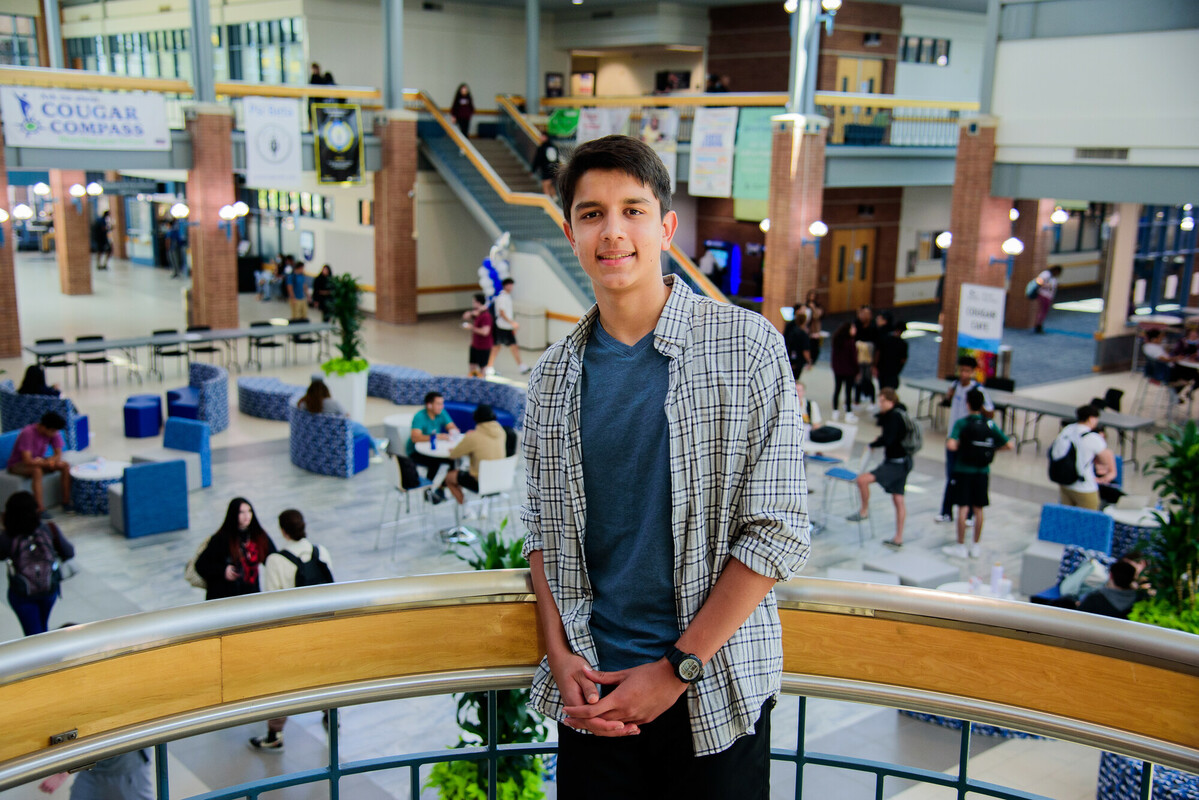EDITOR’S NOTE: Voting is closed and Alexander Kader has moved on to the next round of the competition.
A Collin College dual credit student’s video has been chosen among the top 30 high school videos in a global science video competition named the Breakthrough Junior Challenge.
Alexander Kader notified Tripat Baweja, director of Engineering and Engineering Technology at Collin College’s Technical Campus, about his participation in the competition.
The Breakthrough Junior Challenge requires students between the ages of 13-18 to create a video focused on science, physics, or mathematics. The students are judged on their ability to discuss scientific theories in a creative way. The top 30 videos are placed in a Popular Vote category, and for 16 days (Sept. 5-20) viewers can vote via social media. If Kader’s video, Wobbling Muons, Fermilab, and The Future of Physics II, wins, he will receive a scholarship. And as the winner, his school, Collin College, would receive science lab renovations valued at $100,000. Learn more about Kader and the competition in his question-and-answer interview below.
Why did you decide to take dual credit classes at Collin College?
Dual credit classes are a fantastic concept. They allow me to simultaneously fulfill
my high school requirements and earn college credits. They are challenging and, in
my opinion, much better than Advance Placement courses.
How long have you been a dual credit student at Collin College?
I have been a dual credit student at Collin for two years. I am currently going into
my third year.
Have you decided on a major? If so, what have you decided and why?
I would like to go into engineering; although, I haven’t decided which specific field
to enter. After I get my undergrad, I would like to obtain a law degree. While challenging,
these fields are interesting to me and provide good job opportunities.
How did you hear about the Breakthrough Junior Challenge competition?
One of the Breakthrough Junior Challenge’s partners is Khan Academy. I had been using
Khan Academy for several years to supplement my learning. One day, I received an email
from them inviting me to participate in the challenge, and here I am, three entries
later.
How did you determine your topic?
Initially, I saw this topic on my news feed several months before I began working
on this year’s entry. I was watching several videos and came upon one titled “2021’s
Biggest Breakthroughs in Physics,” and one of the topics mentioned was the muon g-2
experiments. I recalled the article I had read earlier and did a deeper dive into
the subject before settling on this topic.
What was involved in the creation and research of the video? How long did it take?
Creating my video was a long, laborious task. I easily spent more than 120 hours creating
my video over a period of a month. I started learning these creative programs around
three years ago when my mom taught me how to use a 2011 version of Photoshop to design
a t-shirt for a competition my robotics team was holding. From there, I taught myself
how to use various programs from the Adobe Creative Suite, including the newest versions
of Photoshop, Premier Pro, After Effects, Animate, Illustrator, and Lightroom. I also
learned film editing on Filmora before moving to more advanced programs like DaVinci
Resolve. For this video, I used DaVinci Resolve, Photoshop, and After Effects.
Fun fact: One of my animations, the one of the Standard Model, took me four whole
days in and of itself, and I almost ended up not using it.
After the competition, will you continue to study physics and the theory of the Muon?
Who knows, but probably not. While this topic is fascinating, engineering and law
are more interesting to me. But then again, I also really like physics, so it’s a
possibility.
Why should people vote for your video?
Not only would Collin College benefit from the new laboratory, but I would also receive
a scholarship to help me pursue my educational goals. Voting for my video (liking
it on YouTube and/or Facebook) would help to advance my video to the final round of
judging. Click here to vote.

